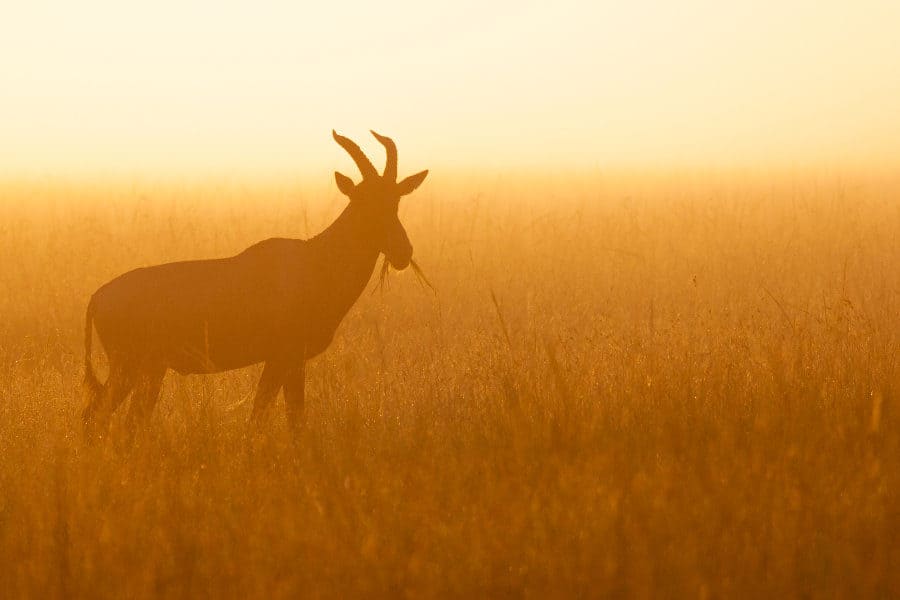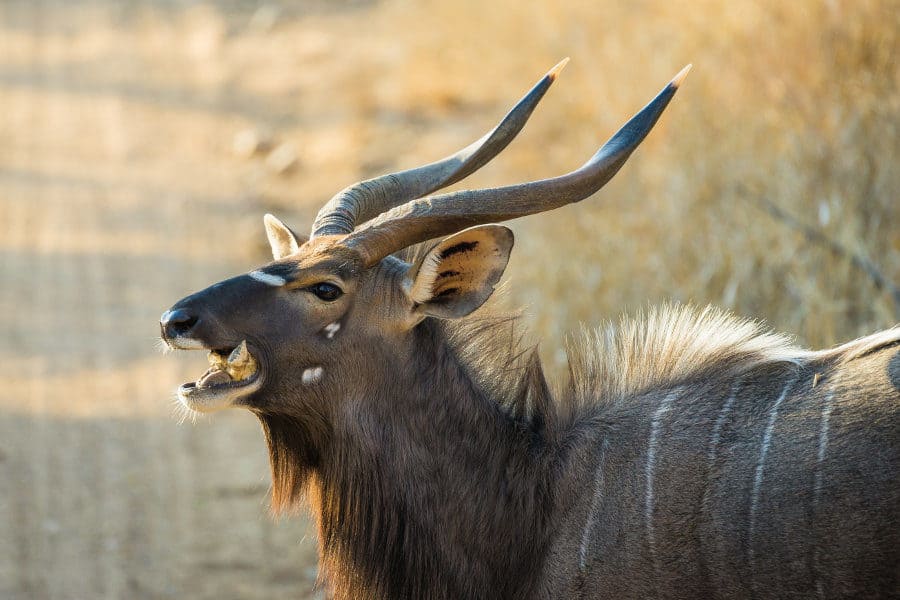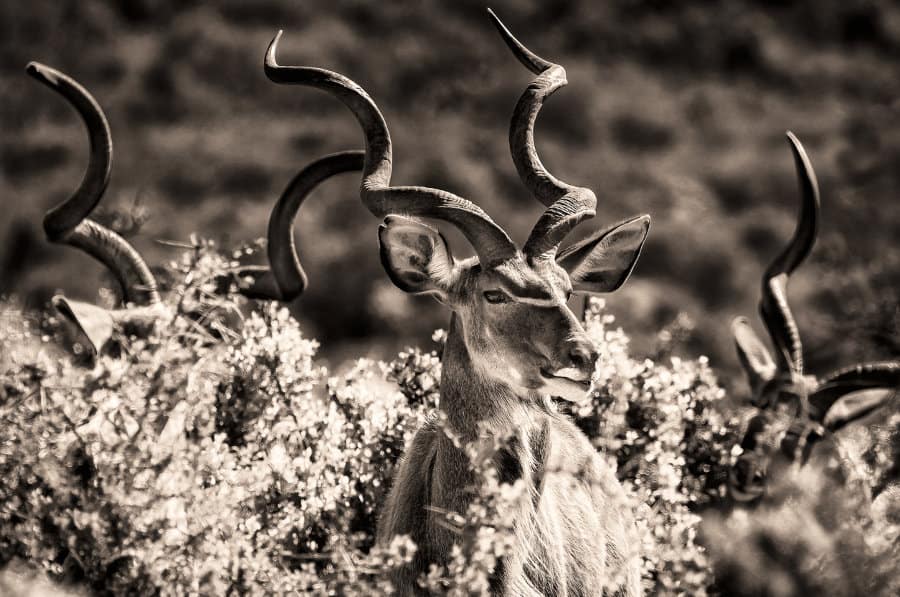People don’t care too much about the Coke’s hartebeest (also called kongoni). When on safari it’s all lions and elephants, leopards and rhinos. But look beyond the famous big five and there are other impressive animals on the savannah.
Spotting Herds on East Africa’s Plains
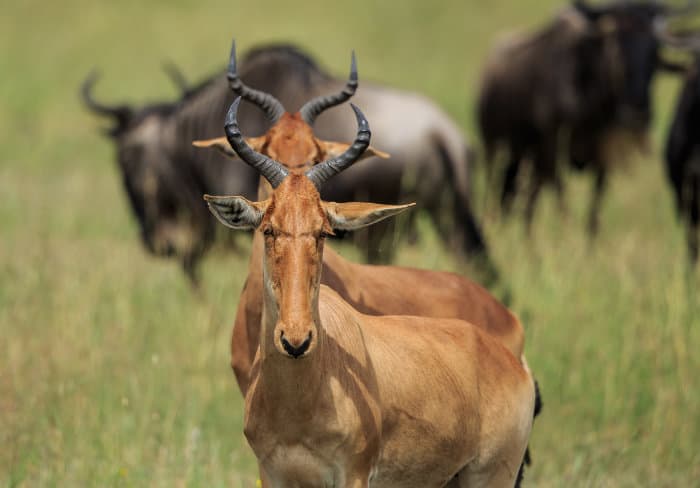
Okay, Coke’s hartebeest aren’t the most striking of animals. They look a little like domestic cows, with “lion-coloured” coats, short horns, and a visible lump upon their neck.
They are a similar size as well, standing around 120 cm at the shoulder and weighing up to 150 kg. This makes them the smallest of the hartebeest species and nowhere near the largest antelope in Africa.
They gather in herds of 10 – 30 individuals, all over the Kenyan and Tanzanian plains. You easily spot them from a distance, a cluster of antelope slowly grazing the day away.
Coke’s Hartebeest Are Difficult to Approach

These animals are abundant. Like the wildebeest they calve and breed at the same time, choosing nutrient-rich soil to aid their newborn’s development.
This regular breeding is a survival mechanism. Females produce calves every year, so the herd can afford to lose a few on the savannah.
Unfortunately, Coke’s hartebeest are like sitting ducks. They have no weapon against predators, nor the speed and agility to run away. That’s why they graze out in the open, with many sentinels scanning for danger.
If anything approaches then the hartebeest scamper off. So it’s incredibly difficult for a safari vehicle to get close: upon hearing and sighting the vehicle the herd moves away. Plus, vehicles can’t go off road in national parks and Coke’s hartebeest are rarely found around trails and roads.
Incredible Safari Experiences with Coke’s Hartebeest
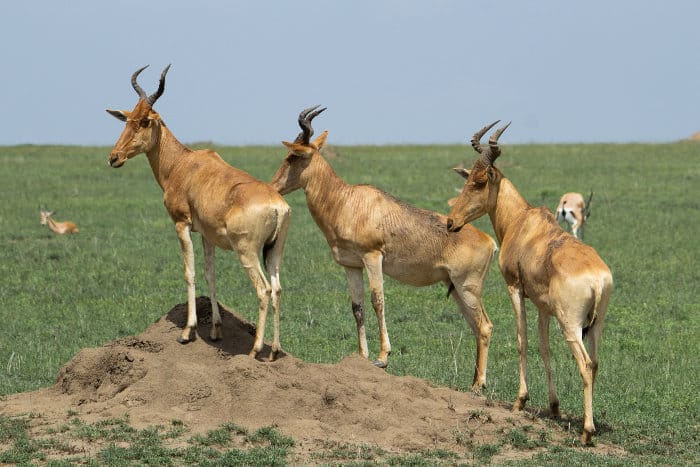
Most people don’t go on safari to see an animal that looks like a cow, especially one that’s running away from them.
Still, this abundant hartebeest species can bring two incredible safari experiences.
East African walking safaris usually stick to wide open plains, so people can stay safe in lion country. The hartebeest don’t run from people, so you can sometimes approach to just ten metres. And at this distance you really see what makes them unique.
The other experience is a hunt. It’s common to see lionesses and leopards stalking Coke’s hartebeest, hunters hiding in the high grass before making their attack. Maybe you’ll even see an actual hunt take place.
Stop the Poaching and Habitat Encroachment
Over a million wildebeest and around half a million zebra form the great wildebeest migration. Wildebeest are now the most abundant animal on the East African plains.
However, that title previously went to Coke’s hartebeest. 200 years ago this was one of the most populous animal anywhere in Africa.
Poaching is rampant and these animals have been killed for their meat. But the biggest challenge is habitat encroachment. These animals need a lot of space to graze. As the battle for resources intensifies, they are forced to survive on smaller and smaller grasslands.
And just because they look a little dull, the plight of these animals symbolises what is happening to our wild world. Just think, there were once over 5 million bison on the American plains and almost all of them disappeared. It would be terrible if something similar happened to the Coke’s hartebeest.
